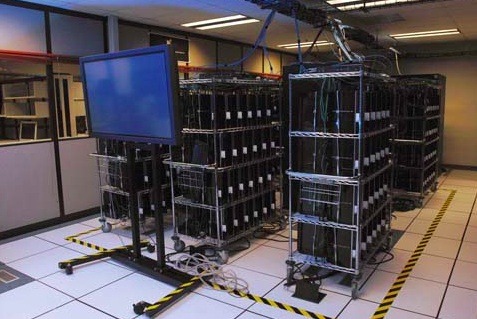 My new HTC Incredible phone has a 1Ghz Snapdragon processor in it. That’s faster than laptop computers were just a few years ago. That, and reading the US Air Force story (you have to wait for that a little longer…) reminded me of an interesting conversation with Zoho CEO Sridhar Vembu two years ago:
My new HTC Incredible phone has a 1Ghz Snapdragon processor in it. That’s faster than laptop computers were just a few years ago. That, and reading the US Air Force story (you have to wait for that a little longer…) reminded me of an interesting conversation with Zoho CEO Sridhar Vembu two years ago:
Given how mobile phones pack a whole lot of functionality in a tiny package, I have wondered if the ideal server farm is just tens of thousands of mobile phones packed together. It seems to me that the semiconductor technology behind mobile devices is far, far more power efficient than the stuff that goes in servers. Partly it is a backwards compatibility issue, with servers having to run code written all the way back to 1980s, while mobile phones simply didn’t exist that far back. Partly, it is also a function of how traditional client-server applications were architectural monoliths, compared to the deeply distributed “service-oriented architecture” that is common in web applications today.
With mobile phones approaching very respectable CPU & memory capacity, packaging them together as a server cluster makes a lot of sense. Linux can run on almost all of the modern CPUs common in cell-phones, and the mobile version of Java seems actually well-suited for server use, particularly for deeply partitioned, distributed applications. Lightweightness is actually an advantage in server software, just as it is in mobile software.
While I don’t know if anyone has implemented the idea, there are other experiments with using cheap but powerful hardware in non-traditional ways – most notably the US Air Force which concluded that Sony PS3 consoles running Linux provide powerful and dirt cheap computing power.

The above cluster contains 1,700 160GB PS3 units, and is a great example of cheap computing – except for a small glitch. A few month later Sony issued a firmware update that kills the ability to install Linux on the PS3. This won’t immediately turn the cluster into dumb game consoles, since the Air Force is not hooked into Sony’s network. Isolated from further patches the machines can still work as Linux computers – but swapping them out and repairs become increasingly difficult. Unless Sony reverses the decision (which is not out of question, given there are several lawsuits on the matter), the Air Force eventually ends up with a bunch of Game Consoles.
Which is not the end of the world – there’s an abundance of Flight Simulators for the PS3 🙂
(Full story @ Ars Technica)
(Cross-posted @ CloudAve)



Recent Comments